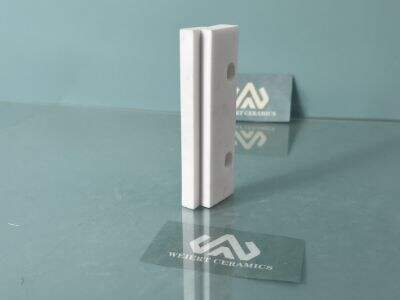Ceramic Bearings - A Review of the Different Types and Grades of Stabilized Zirconia Materials
Zirconia is a very tough material and that makes them it of uses - dental implants, high temperature applications. But not all zirconia are the same. There are different types of zirconia and each type is stabilized with a specific substance so that they all exhibit somewhat unique properties. That will be a broader topic on magnesia stabilized zirconia vs. other stabilized zirconia in this overview segment of the discussion.

What Makes Magnesia Stabilized Zirconia the Best?
Magnesia stabilized zirconia is recognized as having the highest strength and toughness of all ceramic materials. One of the main reasons why zirconia balls are used in testing is because they can resist high temperatures and thermal shock, thus making them ideal when heat resistance comes into play. Furthermore, magnesia stabilized zirconia has the unique tendency not to crack or chip that is particularly important in e. g. dental implant applications.
Magnesia Stabilized Zirconia vs Yttria Stabilised Zirconioxide
Another form of zirconia you might come across is Yttria stabilized zirconium oxide (YSZ) which works well in fuel cells and oxygen sensors. Where YSZ is a strong material, it does not have the super tough strength of magnesia stabilized zirconia. It's also more brittle than magnesia stabilized zirconium, which makes it prone to both cracking and chipping. However, YSZ has some benefits over magnesia stabilized zirconia as it is more conductive which makes this a better choice for electronic applications. With the added feature of corrosion resistance, YSZ is one of the best materials for use under harsh chemical conditions.
Benefits of Using Magnesia Stabilized Zirconia in High Temperature process
One important characteristic which gives magnesia stabilized zirconia significant potential for high temperature usage is its strength under thermal shock circumstances. Material Failure and Thermal Shock: This happens when a hot material is subject to cold environment or vice-versa. This makes magnesia stabilized zirconia an ideal material for use in applications such as furnace linings or thermocouple protection tubes where thermal expansion and contraction at high temperatures is a serious concern. Having said that, magnesium-zirconium oxide also has a very high melting point and does not melt or decompose unless it is formed at almost the highest of temperatures.
Why Magnesia Stabilized Zirconia is the Best Material for Your Dental Implants?
As an implant material, magnesia partially stabilized zirconia arises as the best choice for many reasons. Firstly, biocompatible means that it is not harmful to the human body and does not cause an allergic reaction. Further, magnesia stabilized zirconia is also incredibly strong and capable of surviving the pressures traditionally associated with chewing or biting without succumbing to cracks or fractures. This stainless steel is resistant to corrosion, which makes it suitable for the moist and acidic environment of oral cavity. Finally, the tooth colored properties of magnesia stabilized zirconia can be fabricated into full-contour restorations that appear natural and blend well with adjacent teeth.
An In-Depth Look into Magnesia Stabilized Zirconia vs Other Zirconia Composites
Ultimately, magnesia stabilized zirconia is sought after across broad applications because of its strong strength and toughness in addition to high thermal shock resistance. While YSZ has some advantages in terms of conductivity and corrosion resistance magnesia stabilized zirconias have greater strength and toughness. When considering the world of dental implants, magnesia stabilized zirconia has become a top material choice for its biocompatibility, durability and esthetics. In the end, selection of zirconia types may made completely upon requirement based on long service life even then magnesia stabilized Zr is in race to contest.
Table of Contents
- What Makes Magnesia Stabilized Zirconia the Best?
- Magnesia Stabilized Zirconia vs Yttria Stabilised Zirconioxide
- Benefits of Using Magnesia Stabilized Zirconia in High Temperature process
- Why Magnesia Stabilized Zirconia is the Best Material for Your Dental Implants?
- An In-Depth Look into Magnesia Stabilized Zirconia vs Other Zirconia Composites

 EN
EN
 AR
AR
 HR
HR
 CS
CS
 DA
DA
 NL
NL
 FI
FI
 FR
FR
 DE
DE
 EL
EL
 HI
HI
 IT
IT
 JA
JA
 KO
KO
 NO
NO
 PL
PL
 PT
PT
 RO
RO
 RU
RU
 ES
ES
 SV
SV
 CA
CA
 TL
TL
 IW
IW
 ID
ID
 LV
LV
 LT
LT
 SR
SR
 SK
SK
 SL
SL
 UK
UK
 VI
VI
 TH
TH
 TR
TR
 FA
FA
 AF
AF
 MS
MS
 GA
GA
